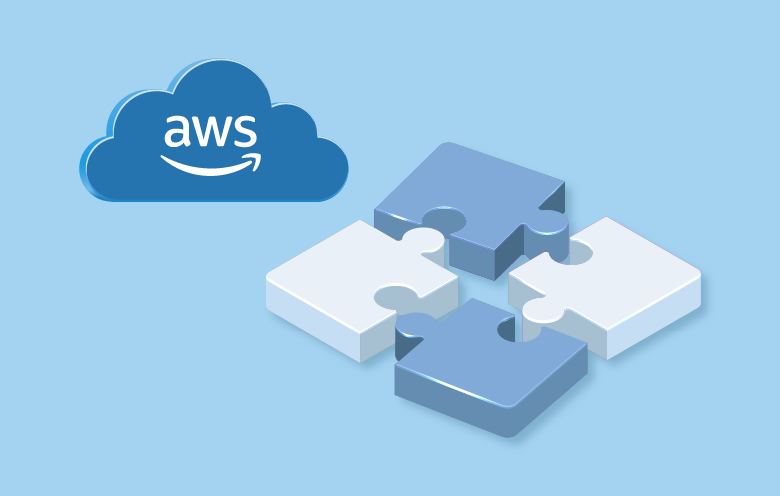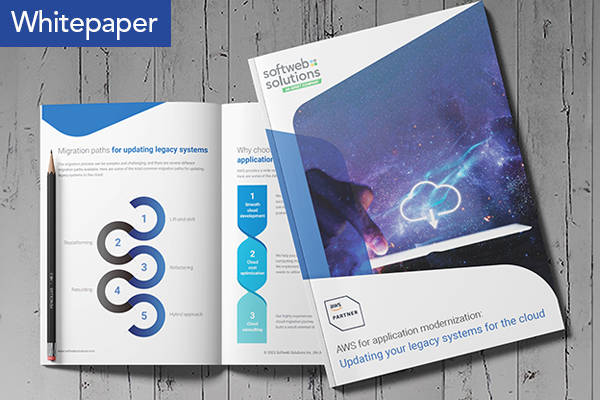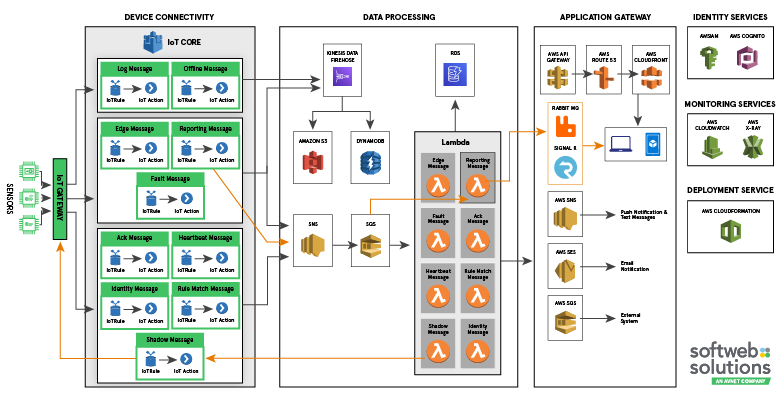
May 2, 2025
AWS application integration empowers seamless connections between decoupled components within microservices, distributed systems, and serverless applications. Communication can occur directly via well-defined point-to-point APIs or asynchronously through message queues (SQS) or event-driven triggers (EventBridge).
Core AWS services like Amazon Simple Notification Service (SNS) and API Gateway facilitate these interactions. The integration process typically involves analyzing the applications, designing the integrated system’s architecture, and finally, implementing and rigorously testing the connection. This collaborative effort often requires a project manager, business analyst, AWS solution architect, developers, QA engineers, and a DevOps engineer.
Benefits of application integration
We’ve established that application integration fosters efficiency and eliminates redundancies. Now, let’s delve deeper into the top business benefits provided by AWS application integration:
1. Agility
DevOps thrives on agile workflows, and AWS application integration services empower you to achieve just that. Here’s how:
- Reduced custom coding: Say goodbye to lengthy custom code development for interoperability. AWS services handle heavy lifting, freeing your team to focus on core functionalities.
- Minimize code repetition: Reduce redundant code across functions and microservices, streamlining development and maintenance.
This results in faster and more efficient application development, allowing you to innovate and adapt with agility.
2. Shift operational focus
AWS application integration services take over operational burdens, empowering your IT team to focus on strategic initiatives. Here’s what you gain:
- Automatic scaling: Forget about time-consuming server provisioning, patching, and management. AWS scales automatically based on demand.
- Focus on high-level tasks: Free your IT team’s valuable time from mundane tasks. Let them focus on strategic initiatives and innovation.
This shift allows you to maximize your IT resources and unlock greater strategic value.
3. Component independence
Application integration fosters component independence, safeguarding your applications from technical failures or resource spikes:
- Decoupled applications: Maintain interoperability while ensuring your applications operate independently.
- Isolated failures: If one component encounters an issue, the rest remain unaffected, preventing widespread system outages.
- Independent scaling: Scale components independently based on their specific needs, ensuring optimal performance for each application.
This resilience translates to a more robust and reliable application ecosystem.
4. Powerful messaging
Effective communication is the cornerstone of successful application integration. AWS delivers with a suite of powerful messaging tools:
- Unmatched throughput: Don’t worry about message traffic limitations. AWS handles high volumes effortlessly.
- Storage facility: AWS utilizes advanced storage solutions across Availability Zones for exceptional availability and durability.
With AWS, you can message with confidence, ensuring your applications stay in sync and operate seamlessly.
By leveraging these key benefits of AWS application integration, you can create a streamlined and efficient workflow, empowering your applications to work together flawlessly. This translates to a more agile, resilient, and ultimately, successful business environment.

Modernizing legacy apps with AWS cloud
Modernize and migrate to cloud with Amazon Web Services. Explore various migration paths available to you in this whitepaper to get the ball rolling and elevate your business with AWS.
Steps for application integration on AWS
The specific timeline of an AWS integration project varies depending on complexity, chosen approach, and existing environment. Here’s a typical process breakdown:
1. Analysis (1-3 weeks):
- Describe application architecture and constraints.
- Estimate investment and value of integration.
- Define success metrics (e.g., faster processing, fewer errors).
2. Design (1-3 weeks):
- Identify and map available APIs.
- Map business workflows and identify integration points.
- Design the integrated system architecture:
- Data flow mapping between applications.
- Data transformation planning (if required).
- Data security planning (location, transmission).
- Define performance requirements.
- Choose integration approach and AWS services.
- Plan a pilot project (optional).
- Plan code adjustments (optional, may take 2-3 months).
3. Implementation & testing (variable duration):
- Implement code changes in applications.
- Connect applications using chosen approach:
- Option 1: Point-to-point API communication (API Gateway, AppSync, AppFlow)
- Design and publish APIs.
- Prepare API documentation.
- Configure integration settings.
- Option 2: Message/event-based communication (SNS, SQS, MQ, EventBridge, MSK, Kinesis)
- Select or build adapters for communication.
- Define message/event routing and modification rules.
- Option 3: Building workflows (Step Functions)
- Sequence applications and services using drag-and-drop interface.
- Set up logs/events for performance monitoring.
- Option 1: Point-to-point API communication (API Gateway, AppSync, AppFlow)
4. Test the integration:
- Uni-, bi-, and asynchronous queries for data consistency.
- Failover and recovery mechanisms.
- Performance, scalability, and security of the solution.
The top AWS integration services for a streamlined workflow
While AWS offers a vast array of application integration services, here’s a breakdown of some of the most powerful and popular choices to streamline your workflow:
1. Amazon SNS
Amazon Simple Notification Service (SNS) excels at creating and integrating loosely coupled and distributed applications. It simplifies managing and sending notifications from the cloud through various delivery options, including:
- Event notification
- Application monitoring
- Workflow system management
- Time-sensitive updates
Virtually any application that generates or consumes notifications can leverage SNS. Its flexible message delivery system utilizes multiple transport protocols for reliability. Plus, with pay-as-you-go pricing, you only pay for the resources you use.
2. Amazon SQS
Amazon Simple Queue Service (SQS) empowers companies to send, store, and receive messages between software components. It acts as a temporary buffer for messages awaiting processing, decoupling applications for increased elasticity. Here’s how SQS benefits your workflow:
- Decoupling: Applications are free to operate independently, enhancing scalability.
- Pull-based delivery: Unlike SNS (push-based), SQS allows applications to control the flow of messages, promoting high-performance processing.
- High-volume messaging: SQS effortlessly handles massive quantities of messages, ensuring your applications can operate at peak performance.
3. Amazon SWF
Amazon Simple Workflow Service (SWF) allows businesses to seamlessly coordinate work across distributed systems. It’s ideal for processing background jobs with sequential or parallel steps, acting as a:
- Task coordinator: SWF orchestrates the execution of workflows, ensuring tasks are completed in the correct order.
- State tracker: It meticulously tracks the processing state of each workflow, providing complete visibility.
- Failure management: SWF gracefully handles task failures, allowing for automatic retry or recovery.
This makes SWF ideal for building asynchronous, distributed systems where complex workflows need to be managed, such as order fulfillment or procedural requests.
4. AWS Step Functions
AWS Step Functions provides a serverless way to sequence AWS services within your business-critical applications. It helps coordinate and organize distributed systems as a series of well-defined steps. With a visual editor, Step Functions simplifies workflow creation and execution, offering:
- Visual workflow building: The user-friendly interface allows you to build and run service sequences visually, streamlining development.
- Scalability and reliability: Step Functions ensures your business-critical workflows are reliable and scale effortlessly.
Application integration on AWS architecture designed by Softweb
This architecture empowers seamless connections between the applications, leveraging the power of AWS services. Designed for security, scalability, and efficiency, it fosters a robust and adaptable foundation for the business ecosystem.
Leverage AWS integration services for faster application development
AWS application integration helps businesses achieve more with their salient IT resources. If you’re looking to learn more AWS and its capabilities, you can hire our certified AWS experts to help you with your needs. Get in touch with us to start your project.
Need Help ?
We are here for you
